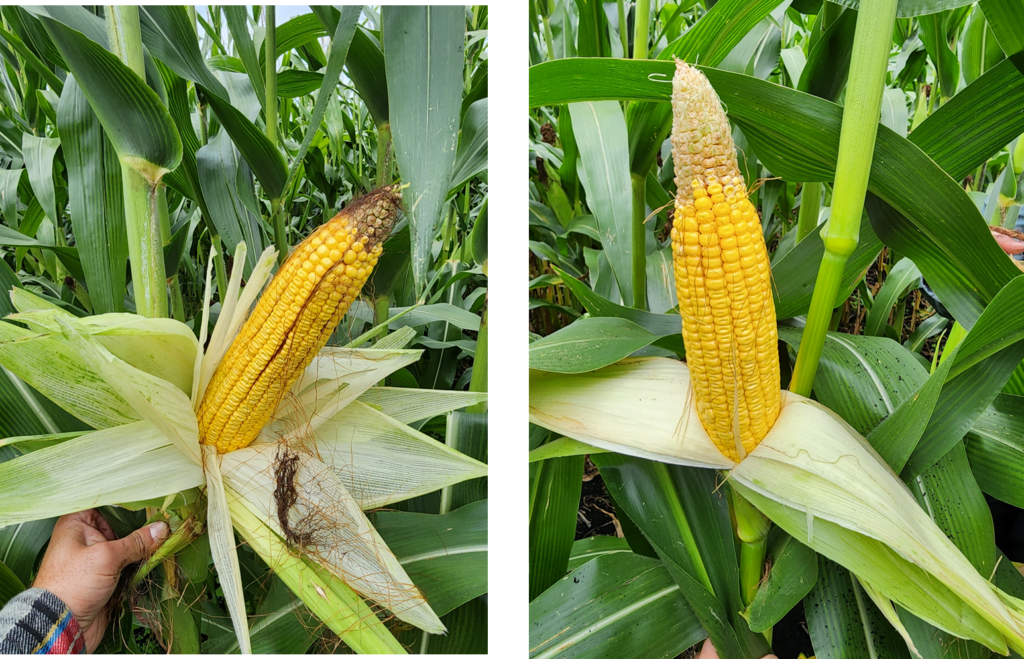Spring tillage season is almost upon us. And so starts the annual crunch that is corn and soybean planting time. Over the years, most farms have gotten larger and larger, but the number of days to work the fields hasn’t changed. So the pressure on growers to start spring field work earlier and earlier intensifies, year over year.
But Advanced Agrilytics Regional Agronomy Lead Travis Kimmel has an important message – don’t rush your spring tillage activities, or you may accidentally create an environment where plants will fail to thrive.
Avoid Vertical Tillage in Wet Conditions
Specifically, Kimmel cautions growers to avoid tillage in wet conditions. He points to one case where the adverse effects of vertical tillage in wet conditions cost one grower up to 40 bu/A in yield in some acres.
“Even in areas where vertical tillage has traditionally had benefit, it’s never beneficial to till an acre that’s too wet,” says Kimmel. “In one case the vertical tillage created a smooth seedbed with good plantability, but by doing so, this washed much of the pore space out, with rainfall then creating compaction, which ultimately hurt their yield.”
Vertical tillage can also have a negative impact on soil structure, plant root development and soil stability. Here’s why:
- Soil Compaction: Heavy equipment presses down on wet soil, squeezing out vital pore spaces. These compacted layers create dense zones that restrict root penetration, limiting access to water, nutrients, and oxygen. This leads to stunted root growth and poor plant health.
- Crusting: Tillage tools tend to destroy soil aggregates, creating dense, sealed layers. Young plants struggle to emerge through crusted surfaces, causing poor emergence, uneven stands and reduced plant populations.
“I’ve pulled ears during the grain fill period in these acres, and there tends to be increased kernel abortion in those environments,” reports Kimmel. “That can happen for a variety of reasons, but the most basic reason for tip abortion is increased plant stress. That could be due to lack of root zone development caused by compaction. I’m seeing this kernel abortion in acres that should be filled with thriving plants – and that pre-plant tillage on wet acres is a factor.”

(Above) A comparison of a corn plant with a healthy, well-developed root system (on the left) versus the poorly-developed root system caused by soil compaction (on the right.)
(At Left) Here are examples of kernel abortion. Kimmel explains that in many cases, this is prevalent in areas where acres were tilled before planting, when they were too wet. This resulted in soil compaction, which led to poor root development and increased stress on growing plants.
- Poor Drainage and Waterlogging: Compacted soils reduce water infiltration, causing surface pooling and saturation in the root zone. Waterlogged conditions suffocate plant roots, leading to nutrient deficiencies, yellowing leaves, and increased susceptibility to diseases like root and crown rot.
“When you get those first couple of rainfalls, or even that first inch of rainfall, you are at an increased risk of developing an anaerobic environment if not tilled properly,” he explains. “This is because you have essentially disturbed a lot of that aggregate stability in the soil profile. That, in turn, induces poor root development and can lead to root rot.”
- Disrupted Soil Structure: Wet soils are more prone to structural damage when tilled, destroying natural soil aggregates. In turn, this poor soil structure reduces water-holding capacity, nutrient availability, and root growth, all critical for strong corn yields. Repeated vertical tillage in wet conditions increases the acre’s soil stability.
- Reduced Microbial Activity: Saturated, compacted soils limit airflow, stressing beneficial soil microbes responsible for nutrient cycling. This slows down organic matter decomposition and nutrient release, affecting early-season growth.
“It is well documented that tillage can destroy soil aggregates regardless of the tool used, but the advent of high-speed discs has accelerated this with continuous use. This is what we would refer to as “minimum till”,” explains Kimmel. “We work the ground shallow, generally to the depth where we can create a smooth finish, then plant into a firm bottom. Over time, we have witnessed increases in early season disease pressure (Phytophora, Pythium, Rhizoctonia, others), because when we receive rainfall, the moisture pools at the depth to which growers are running these tools. Now, we have excessive soil moisture and an environment that promotes the proliferation of soil borne diseases.
“I’ve had customers who were losing approximately 40 bushels per acre of yield due to soil compaction and other issues caused by tilling on wet acres when they should have waited for those acres to dry out,” says Kimmel. “That’s almost $200 per acre at today’s prices. With the farm economy as it is today, that’s a huge price to pay for not waiting a few days.”
The Value of Granular Data Analysis
The Advanced Agrilytics methodology of spatial analysis at the sub-acre level looks at a much wider variety of factors that affect nutrient uptake and soil health. As Kimmel explains, this “holistic approach” allows them to create the industry’s most granular prescriptions for their customers. Advanced Agrilytics’ agronomy experts then work with customers to examine and adjust a wide variety of agronomic practices, from seed selection to variable rate seeding strategies, variable rate nutrition strategies, drainage tactics and much more.
For more information about how to create “whole farm” improvements in your farming operation, contact us here.